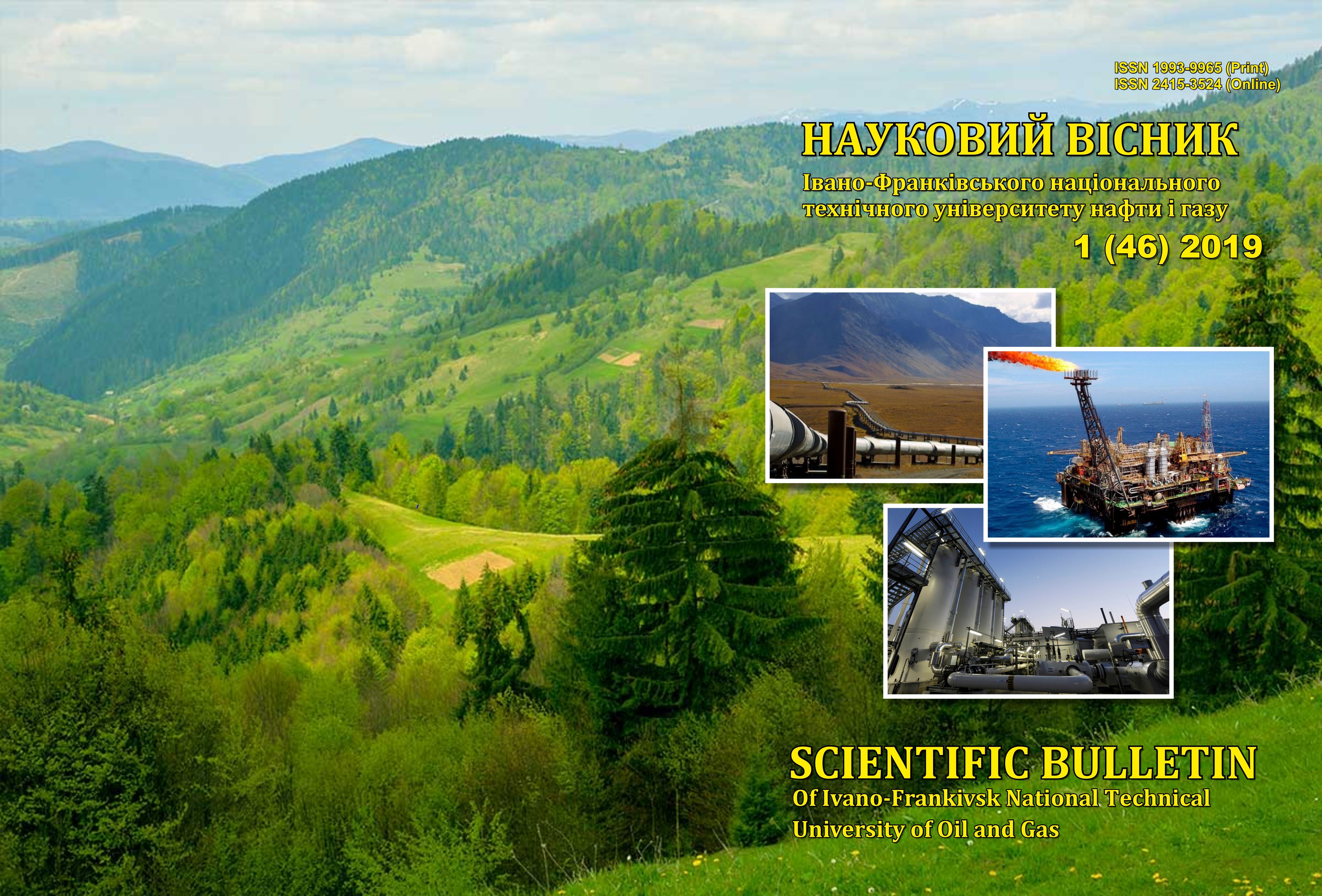RATIONALE FOR THE USE OF DOUBLE SHOULDER THREADED CONNECTIONS OF HOLLOW SUCKER RODS
DOI:
https://doi.org/10.31471/1993-9965-2019-1(46)-7-15Keywords:
stress, fatigue, tightness, preload, parametric geometric model, finite element method, iterative design.Abstract
Frequent failures of standard threaded connections of hollow sucker rods are caused by their fatigue failures, self-loosening and leakages. This is mainly caused by such design flaws as unequal load on threads, insufficient shoulder area, stress concentration in the groove, low resistance to bending and torsion loads. Using iterative design, based on parametric geometric modeling and the finite element method, the feasibility of using double shoulder threaded connections for hollow sucker rods has been proved and their design has been improved. The improved connection has two shoulders, modified grooves with an elliptical profile, correction of the first turn of the nipple thread and optimal values of interferences. Due to this, the joint has greater tightness, strength at bending, torsion and compression, higher resistance to self-loosening, more equal load on the threads and greater fatigue strength compared to the standard one. The value of the fatigue safety factor in the area of the first turn of the nipple thread is increased by 13...14, in the area of the last turn of the coupling – by 2.6...4, in the area of the nipple groove by 0…0.4. The use of an elastic element on an additional shoulder allowed increasing the tolerance of the interference on it to 0.2 mm, making it unnecessary to control dimensions before screwing. Even after damage to the elastic part and loss of tension on an additional shoulder, the connection has greater strength than the standard one. In case of rod repairs, improved nipples can be easily implemented by welding them to the rod body. There is also the possibility of implementation of double shoulder cylindrical connections without modifying the standard nipple.
Downloads
References
Kopei V. B. Pidvyshchennia resursu shtanhovoi kolony pry vydobutku parafinystykh naft: dys. ... kand. tekhn. nauk : 05.05.12. Ivano-Frankivsk, 2004. 175 p.
The NOV Grant PridecoTM GPDS connection. URL: https://www.nov.com/Segments/ Wellbore_Technologies/Grant_Prideco/Connection_Technologies/Grant_Prideco_Double_Shoulder_(GPDS)_connection.aspx (Last accessed: 10.02.2019).
Ultra high torque double shoulder tool joint: US Patent No: 5908212 ; filed May 2, 1997 ; date of patent Jun. 1, 1999.
Analiz suchasnykh konstruktsii zamkovykh ziednan obvazhnenykh burylnykh trub / Artym V. I. ta in. Naftohazova enerhetyka. 2017. No 2(28). P. 22-30.
Numerical and experimental distribution of stress fields for double shoulder tool joint / Yuanhua Lin et al. Engineering Failure Analysis. 2011. Volume 18, Issue 6. P. 1584-1594.
Zhu X., Zhi Z. Design of an ultra-high torque double shoulder drill-pipe tool joint for extended reach wells. Natural Gas Industry B. 2017. Volume 4, Issue 5. P. 374-381.
Dong L., Zhu X., Yang D. Study on mechanical behaviors of double shoulder drill pipe joint thread. Petroleum. 2018. URL : https://doi.org/10.1016/j.petlm.2018.01.004 (Last accessed: 10.02.2019).
Three-dimensional mechanical analysis of the double-shouldered tool joint / Di Q. et al. Shiyou Xuebao/Acta Petrolei Sinica. 2012. Volume 33. P. 871-877.
The influence of clearance of secondary shoulder on performance of double shoulder drill pipe joint / Chen F. et al. Gongcheng Lixue/Engineering Mechanics. 2013. Volume 30. P. 353-357.
Kopei V. B. Abstraktna model informatsiinoi systemy pidtrymky zhyttievoho tsyklu vyrobu. Prykarpatskyi visnyk NTSh. Chyslo. 2017. No 2(38). P. 71-96.
Sines G. Behavior of metals under complex static and alternating stresses / eds. G. Sines, J. L. Waisman. Metal Fatigue. New-York : McGraw-Hill, 1959. P. 145-169.
Downloads
Published
How to Cite
Issue
Section
License
Авторські права....


1.png)







1.png)







